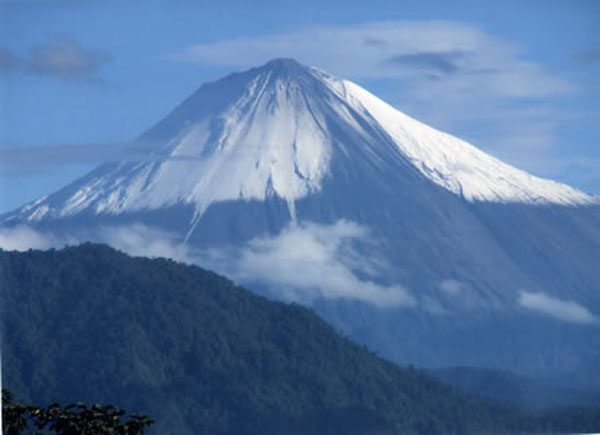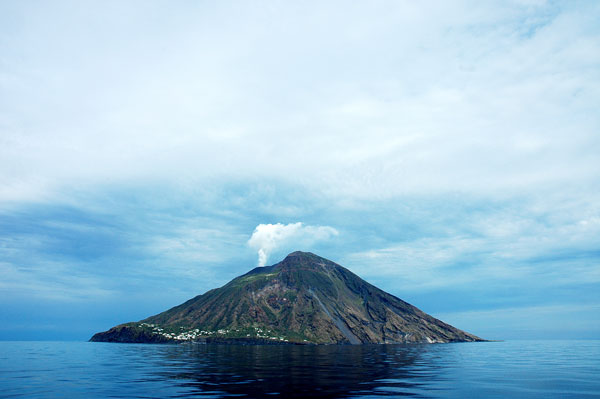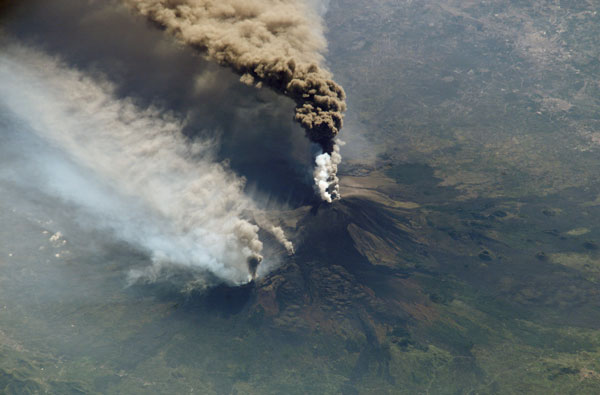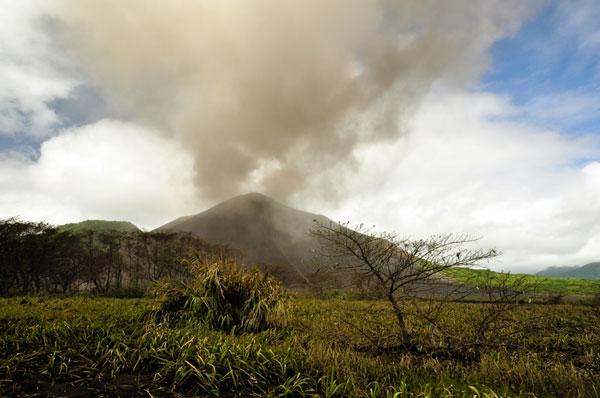The World's Five Most Active Volcanoes

Intro

The volcano Mount Merapi in Indonesia has been erupting for a week so far, and the country reported increased rumblings at 21 other active volcanoes in the area.
These recent volcanic eruptions have turned the public's eye to volcanoes that have been long dormant but could explode at any time, yet there are volcanoes that are erupting almost constantly, and have been for years.
This list contains the top five most active volcanoes in the world since 1900, based on years of continuous activity, according to records of eruptions from Paul Kimberly, a Global Volcanism Program Manager with the Smithsonian Institution.
Sangay, Ecuador - 94 years

Sangay has had frequent eruptions in historic times, mostly of Strombolian type. The present-day volcano was built within horseshoe-shaped calderas of two previous edifices, which were destroyed by collapse to the east, producing large debris avalanches that reached the Amazonian lowlands. The modern edifice dates back to at least 14,000 years ago.
The earliest report of a historical eruption was in 1628. More or less continuous eruptions were reported from 1728 until 1916, and again from 1934 to the present. The more or less constant eruptive activity has caused frequent changes to the shape of the summit crater complex.
The steep-sided volcanic cone reaches a height of 17,158 feet (5,230 meters). The top is sometimes covered by snow but because of its ongoing eruptions and activity no permanent ice field has established itself.
Santa María, Guatemala - 101 years

The Santa Maria Volcano towers over Guatemala's Pacific coastal plain.
Get the world’s most fascinating discoveries delivered straight to your inbox.
Santa Maria is a 12,375-foot (3,772-meter) tall stratovolcano consisting of alternating layers of hardened ash, lava and rock.
A catastrophic eruption in 1902, one of the largest eruptions of the 20th century, caused severe damage throughout southwestern Guatemala and carved a crater on the volcano's flank.
Since 1922, a lava-dome complex, Santiaguito, has been forming in the 1902 crater.
Santa María is part of the Sierra Madre range of volcanoes, which extends along the western edge of Guatemala, separated from the Pacific Ocean by a broad plain. The volcanoes are formed by the subduction of the Cocos Plate under the Caribbean Plate, which led to the formation of the Central America Volcanic Arc.
Stromboli, Italy - 108 years

Stromboli Volcano, off the west coast of southern Italy and the north coast of Sicily, has been erupting nearly continuously for over 2,000 years, which has earned it the nickname "Lighthouse of the Mediterranean."
Eruptions from the summit craters typically result in a mild energetic bursts that last for only a few seconds and emit ash, incandescent lava fragments and lithic blocks up to a few hundred meters in height.
The explosive style of volcanic eruption that this and other volcanoes exhibit has even been named "Strombolian." Stromboli's activity is almost exclusively explosive, but lava flows do occur at times: an effusive eruption in 2002 was its first in 17 years.
Stromboli is a stratovolcano composed of alternating layers of hardened ash, lava and volcanic rocks. The 2002 major eruption caused a small tsunami and damaged Stromboli Village on the north side of the island.
The island of Stromboli is the tip of a massive underwater volcano. The island grows as the volcano continues to pump out fresh lava. A March 6, 2007, eruption added a new 660-foot-wide (200-meter-wide) delta that stretches 160-330 feet (50-100 meters) into the ocean.
Mount Etna, Italy - 109 years

The ancient Greeks believed Mount Etna, located on the island of Sicily, to be the home of Vulcan, the god of fire to them, Mount Etna erupting merely meant Vulcan was forging weapons for Mars, the god of war.
Dating back to 1500 B.C., the volcano has erupted around 200 times, and the 21st century saw Mount Etna erupting yet again in 2001, with lava flows reaching within mere miles of the nearby town of Nicolosi.
The mountain is currently around 10,958 feet (3,340 meters) in height. It is the largest active volcano in Europe, though this varies with summit eruptions. It is the highest mountain in Italy south of the Alps.
The most violent eruption in the history of Mount Etna occurred in March of 1669. The volcano spewed molten rock for days on end, the eruption finally stopped at the end of April of that year.
This past August, the volcano had its most recent eruption, an ash explosion.
Mount Yasur, Vanautu - 111 years

Mount Yasur is an active volcano on Tanna Island, part of the archipelago nation of Vanuatu in the South Pacific. The volcano, one of many along the Pacific Ring of Fire, is 1,184 feet (of 361 meters) above sea level.
It is a stratovolcano, caused by the eastward-moving Indo-Australian Plate being subducted under the westward-moving Pacific Plate. Yasur has been erupting nearly continuously for over a century, and its eruptions, which often occur several times an hour, are classified as Strombolian or Vulcanian (a relatively low-level type of eruption).
The glow of the volcano is rumored to be what attracted Captain James Cook on the first European journey to the island in 1774.
Today, the mountain is a sacred area for the John Frum cargo cult. Members of the cult revere John Frum, a deified messenger who foretold the bringing of wealth to the island by American forces, and believe he resides in Mount Yasur with his countrymen.


